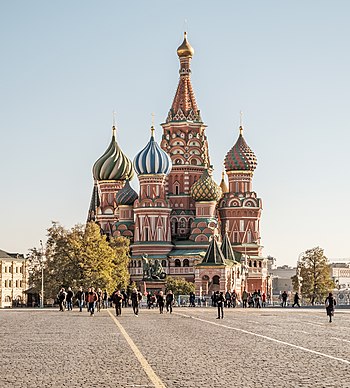
| Part of a series on the |
| Culture of Russia |
|---|
 |
| Society |
| Topics |
| Symbols |
The architecture of Russia refers to the architecture of modern Russia as well as the architecture of both the original Kievan Rus', the Russian principalities, and Imperial Russia. Due to the geographical size of modern and Imperial Russia, it typically refers to architecture built in European Russia, as well as European influenced architecture in the conquered territories of the Empire.
The vernacular architecture stems from wooden construction traditions, and monumental masonry construction started to appear during the Kievan Rus’ era in what is now modern Ukraine. After the Mongol invasion of Rus, the Russian architectural trajectory continued in the principalities of Novgorod, Vladimir-Suzdal, Pskov, Muscovy, and the succeeding states of the Tsardom of Russia.
Much of the early standing architectural tradition in Russia stems from foreign influences and styles. Among the characteristic styles present in Russian architecture are the Byzantine revival style of the Kievan Rus’ and succeeding principalities’ churches, the Muscovite style, baroque, neoclassical, eclecticism, art nouveau, as well as the signature styles of the Soviet period.
- ^ "A History Of Russian Architecture | RWJoninery, Bespoke Joinery". Bespoke Joinery - Manchester & North West. 2018-07-27. Retrieved 2019-04-18.